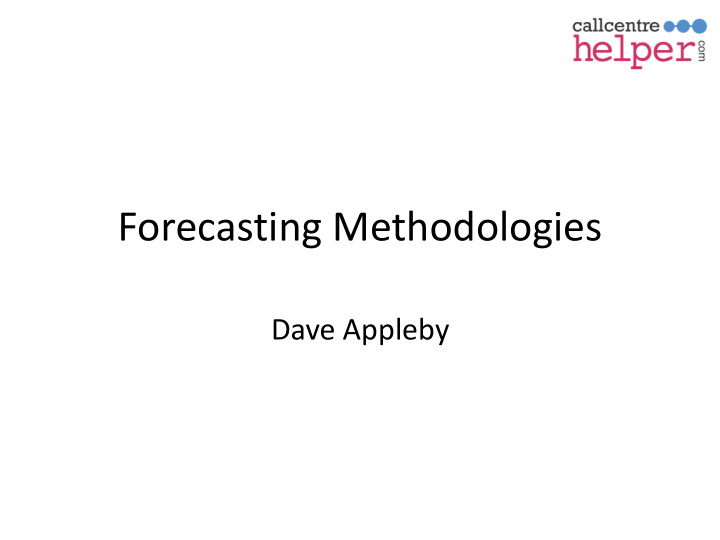



Forecasting Methodologies Dave Appleby
Types • Standard Erlang-C • Holt-Winters • ARIMA
So what does it actually mean? • Standard Erlang-C Based on standard ‘traditional forecasting methods. Looks at historical data and provides a forecast based on existing trends • Holt - Winters Adds the seasonality component to a basic model. Allows for the introduction of ‘pseudo - random’ events, and, annual events. • ARIMA Auto regressive integrated moving average (scary huh???) Adds in additional smoothing to the forecasting model by looking at the moving average as well as the Poisson curve.
Outliers? • Outliers happen! Whether from a single call, E-Mail delivery problem or other issue, the trick is knowing what, and when, to remove data points! • Was it a one off? John Casey advocates, quite sensibly too, that you need to analyse the outliers you remove. Look for patterns as some may be becoming BAU! • What to remove? A lot of the time deciles or octiles are the most useful, depending on the spread of your data. Don’t forget to remove the short time periods as well as the top end outliers! • What to add back? Remember you need to add something back in, not just a 0! Are you going to use the 2 nd and 9 th decile figure or a standard mean, or, something else? Colin Whelan of the Forum recommends using 2 nd or 3 rd standard deviation.
Human nature 00 40 % of 12.5 % of contacts contacts 45 15 30 % of 17.5 % of contacts contacts 30 The clock demonstrates morning voice arrivals into a UK utility companies contact centre (Data from 2011)
Recommend
More recommend